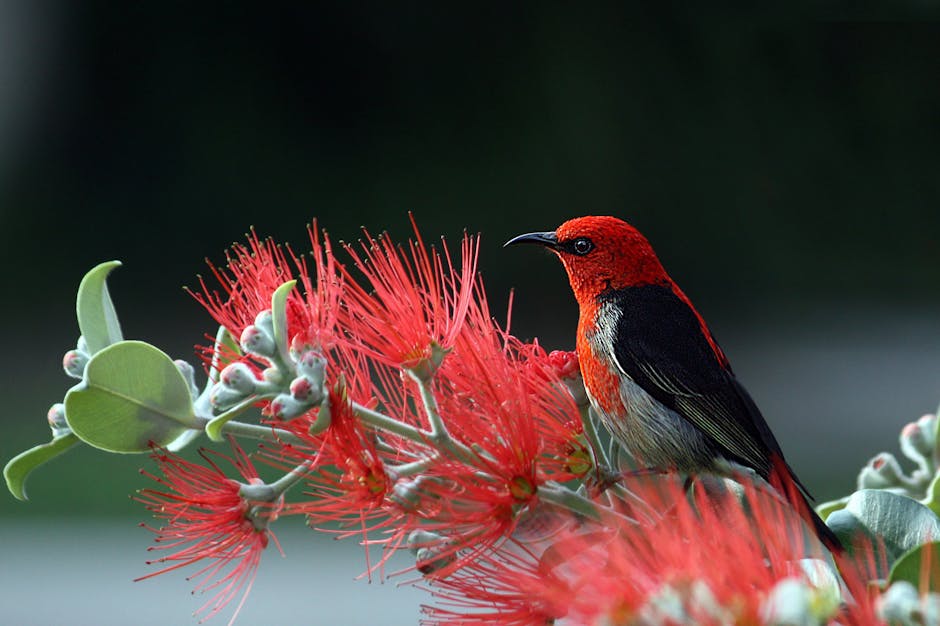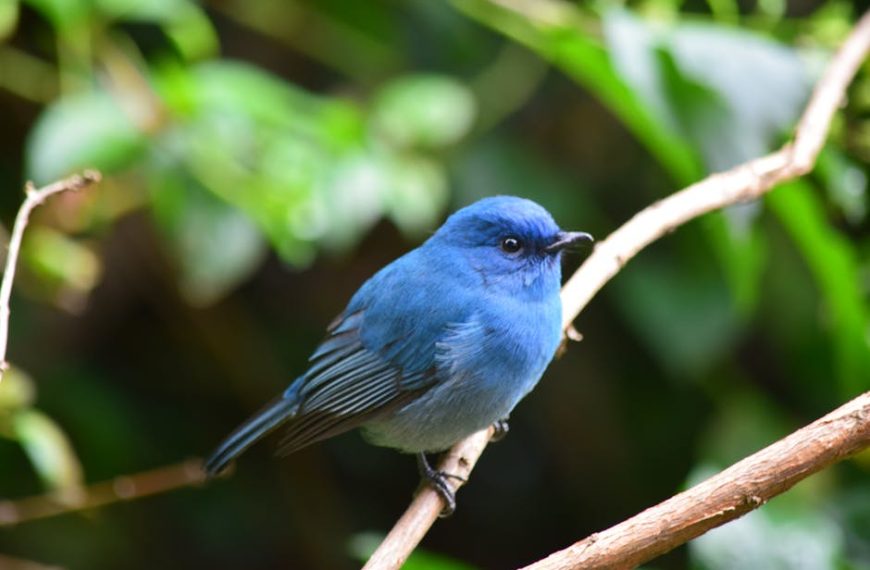Characterized by incomparable diversity and resilience, birds have over time evolved remarkable biological modifications that allow them to effectively inhabit almost all types of ecosystems. For those favoring tree habitats, unique adaptions in their morphology and behavior have played instrumental roles. Let’s delve into identifying and understanding these ingenious characteristics that empower our avian friends to ace the arboreal lifestyle.
1. Specialized Feet and Claws for Perching and Climbing
Trees provide a promising vertical landscape for survival, and to maneuver through this uneven terrain, birds have evolved distinctive foot and claw designs. Anisodactyl feet, the most common configuration in birds, exemplified by the robust feet of sparrows and robins, allow for secure perching. Woodpeckers and some owls, on the other hand, have zygodactyl feet, which provide both a powerful grip and deft footwork for tree climbing.
- Anisodactyl: The configuration where three toes face forward and one backward, perfect for perching.
- Zygodactyl: Two toes face forward and two backwards, suitable for swift vertical climbing.
- Syndactyl: Birds like kingfishers have two conjoined front toes, ideal for swift fishing.
- Pamprodactyl: Like swifts, some birds can rotate all toes forward for stable talon bearing on flat surfaces.
Each type of foot structure, with its own set of advantages, uniquely enables tree-dwelling birds to live and thrive in their particular niches.
2. Flight and Gliding Adaptations
Acrobatic maneuvers in the dense arboreal environment require birds to be first-rate flyers and gliders. Notably, the shorter, rounder wings of birds like doves and pheasants provide brisk lift-off, enabling them to change direction promptly if they perceive danger.
Some featured adaptations include:
- Broad wings: Allow for soaring and high-speed moves
- Pointed wings: Perfect for flapping flights at nectar-rich flowers
- High wing loading: Suitable for carrying heavy prey or objects
Surprisingly, some of these adaptations have real predator-prey implications. For instance, predatory birds typically have long, broad wings and a high wing loading, enabling them to catch their prey with precision and speed.
3. Adaptations to Blend with Tree Habitats
Striking a balance between being visible to a mate and invisible to a predator is a fine art fine-tuned by evolution. Birds inhabiting trees often develop intricate patterns and colorations that mimic their tree habitats, a process known as crypsis. A classic example is the tawny owl, with feathers closely resembling the bark of a tree, enabling it to remain concealed from its predators.
Certain birds like the Eastern Screech-owl can alter their body posture to resemble a tree branch, an additional layer of camouflage protection. Other birds adopt countershading, where their undersides are lighter, rendering them less visible when viewed from below against the light sky.
From these examples, it’s evident that camouflaging is an interplay of patterns, body behaviors, and the physical environment, crafting a clever survival strategy for tree-dwelling birds.
4. Adapted Beak Designs for Tree Birds
Just as tailor-made tools define the outcome of a job, the specialized beaks of birds determine their dietary possibilities. For tree-dwelling birds, beaks are adapted to gather a variety of food culled from the trees. Take the example of the pointed and slightly curved beak of the nectar-feeding hummingbird, which allows it to reach the depth of blossoms to extract sap. In contrast, woodpeckers have hard, chisel-like beaks that are perfect for drilling into tree bark to reach insects and larvae.
- Woodpecker: Chisel-like beak for drilling into the bark.
- Hummingbird: Long, tubular beak ideal for extracting nectar from flowers.
- Sparrow: Short, stout beak for crushing seeds and berries.
A comparative analysis of these beaks reveals specific adaptations empowering birds to overcome challenges inherited from their individual tree habitats.
5. Tail Feather Adaptations for Stability and Steering
The tail serves as the rudder for many bird species, contributing phenomenally to their in-flight agility. A typical example is the fork-tailed drongo, whose deeply split tail helps maneuver sharp turns while chasing insects. Additionally, some birds use extravagant tail feathers to lure mates and fend off predators. The spectacular fan tail of the male peacock is one such dazzling display of evolutionary craft.
Tail feather styles such as:
- Fork-tailed Drongo: Deeply bifurcated tail for swift turning.
- Peacock: Elaborate fan tail for mate attraction and predator deception.
- Woodpecker: Stiffened tail feathers that support the bird’s body on vertical surfaces.
From stabilizing their body on tree trunks to wooing their mates, tail adaptations significantly influence the survival rate of tree-dwelling birds.
To summarize, nature spares no effort in evolution. Each bird species that inhabits trees has developed a unique repertoire of physical and behavioral adaptations that equip them to wrestle with the challenges posed by their habitats, ensuring not just their survival but also a flourishing existence in the process. So, the next time you spot a bird effortlessly navigating its way through tree branches, remember, it’s not just about wings, but a myriad of evolutionary wonders that enable them to do so.
Key Takeaway:
- Birds have developed specialized feet and claws that enable efficient climbing and secure perching.
- The shape and design of a bird’s wings facilitate easier manoeuvrability, efficient flight and gliding.
- Birds use camouflage strategies to blend with their tree habitats, increasing their survival rate.
- Beak shapes of tree-dwelling birds vary according to their diet, enabling them to gather a variety of food from trees.
- Tail feathers offer stability during perching, assistance in steering flight, and sometimes even contribute to attracting mates and bluffing predators.
It’s fascinating to realize how finely tuned and advanced evolution can be. Every trait, every unique aspect of tree-dwelling birds, has been refined over generations with precision to ensure their survival. Understanding these adaptations gives us an exciting peep into nature’s playbook. Let’s continue to explore, appreciate and safeguard this marvellous biodiversity adding colour, charm and life to our planet.
FAQs
Q: Why do birds have different types of feet?
A: Different types of feet in birds have evolved to suit their specific needs. Whether it’s perching, climbing, or catching prey, each design is for a particular task. Such diversity of feet ensures birds’ survival and success in their respective habitats.
Q: Does wing shape influence a bird’s flying ability?
A: Absolutely! The shape and size of a bird’s wing influence how it flies. For instance, birds with long, narrow wings, like albatrosses, are good at gliding, while birds with short, broad wings, like sparrows, are skilled at rapid take-off and manoeuvring.
Q: How important is camouflage for birds?
A: Camouflage is incredibly important for birds. It helps them blend into their environment, making it difficult for predators to spot them. It also assists predatory birds in sneaking up on their prey undetected.
Q: Why do birds have different beak shapes?
A: The shape and size of a bird’s beak are closely related to their diet. For instance, a bird that primarily feeds on seeds will have a different beak shape from a bird that feeds on insects or nectar. This adaptation ensures that they efficiently gather and consume their food.
Q: What roles do tail feathers play in birds?
A: Tail feathers play several important roles in birds. They aid in flight stability, steering, and braking. Additionally, they are used for attracting mates and even distracting predators in some species.
Feel free to share this article with bird-lovers and nature enthusiasts alike, encouraging them to explore more incredible topics on our website.












